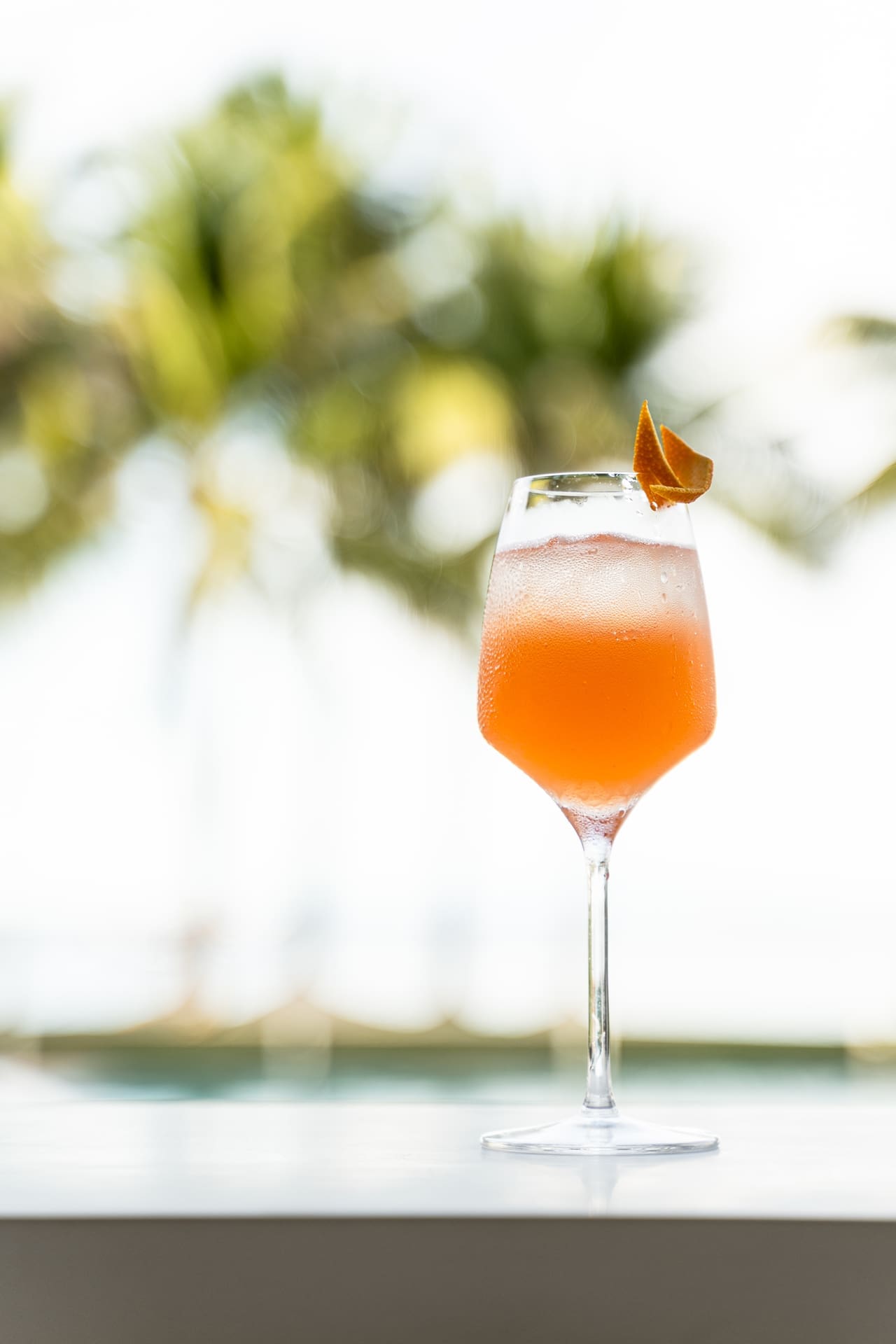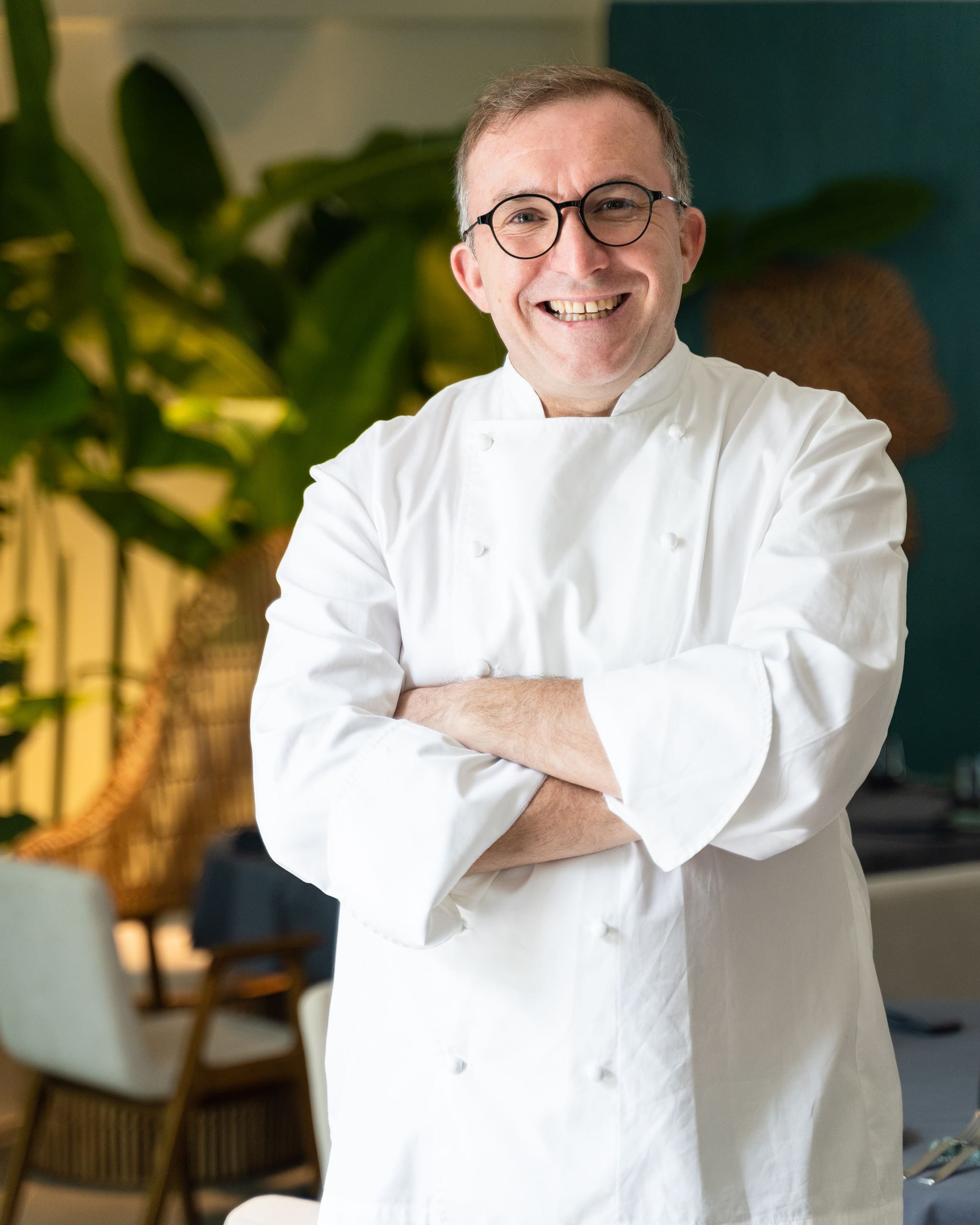Image courtesy of Sea.food
There’s that old meme that goes, “I’m on a seafood diet. I see food and I eat it.” This was the theme of the weekend when Chef Chele Gonzalez media-launched Sea.food by Chele Gonzalez, a three-month-old restaurant in Aqua Boracay that primarily serves, you guessed it, the fruits of the sea.
Originally branded as Aqua Boracay by YOO (the Philippe Starck design firm) ten years ago, the property was acquired from an Italian developer by its current owner, Antonio Co, a nickel mining magnate who decided to venture into the resort industry. He proceeded to hire the most notable names in the industry to outfit the resort.
With elliptical white buildings flanking two extensive pools along a central path that leads to the new restaurant, Aqua Boracay gives serious Miami-slash-Ibiza. Interiors by Ed Calma and furniture by Vito Selma bring things back to the Philippines, with understated modern tropical luxe as the defining look.
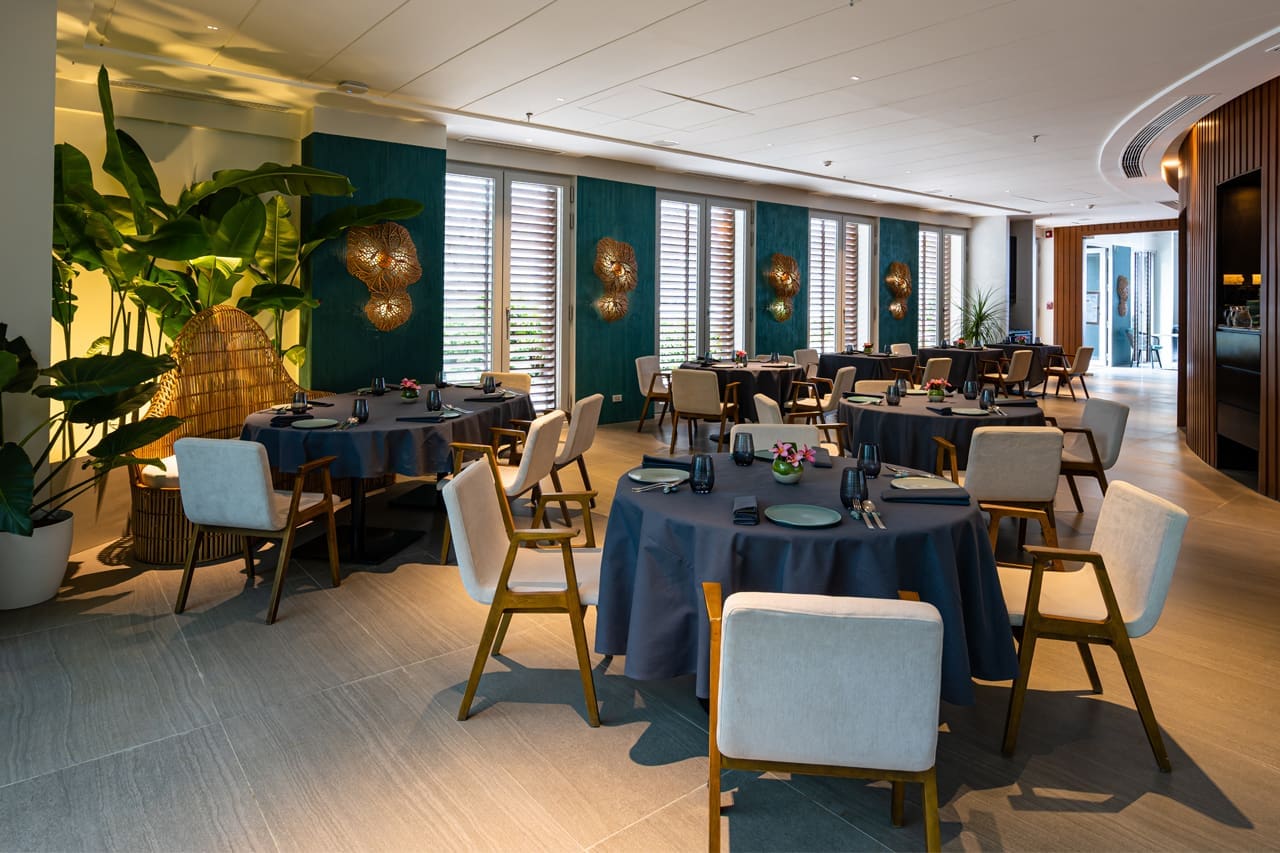
Prior to the pandemic, the resort was intended to be marketed to “young partygoers.” The secondary pool, poolside bar, and cozy cabanas stationed by the beachfront of Bulabog do have Potato Head aspirations, but this weekend, the guests were mostly writers and food personalities, and the dress code was strictly: forgiving.
Chele and team welcomed us with an evening soiree at the rooftop of the Ibiza Presidential Suite. Tendrils of octopus curled over a charcoal grill while rum-based cocktails by the Curator were passed around in Tiki mugs. We were given a preview of the restaurant’s offerings with familiar seafood dishes from around the world, refined by technique, taste, and quality ingredients. The sweet and sour lapu lapu, for instance, won over even non-fans of the dish who have associated it with the cloying sweetness of its unnaturally orange sauce. “We need rice with this,” our table groaned, and voila, a pot of decidedly non-pescatarian lechon fried rice was whisked to our table. Meanwhile our glasses were kept full with wines paired by Cyril Addison.
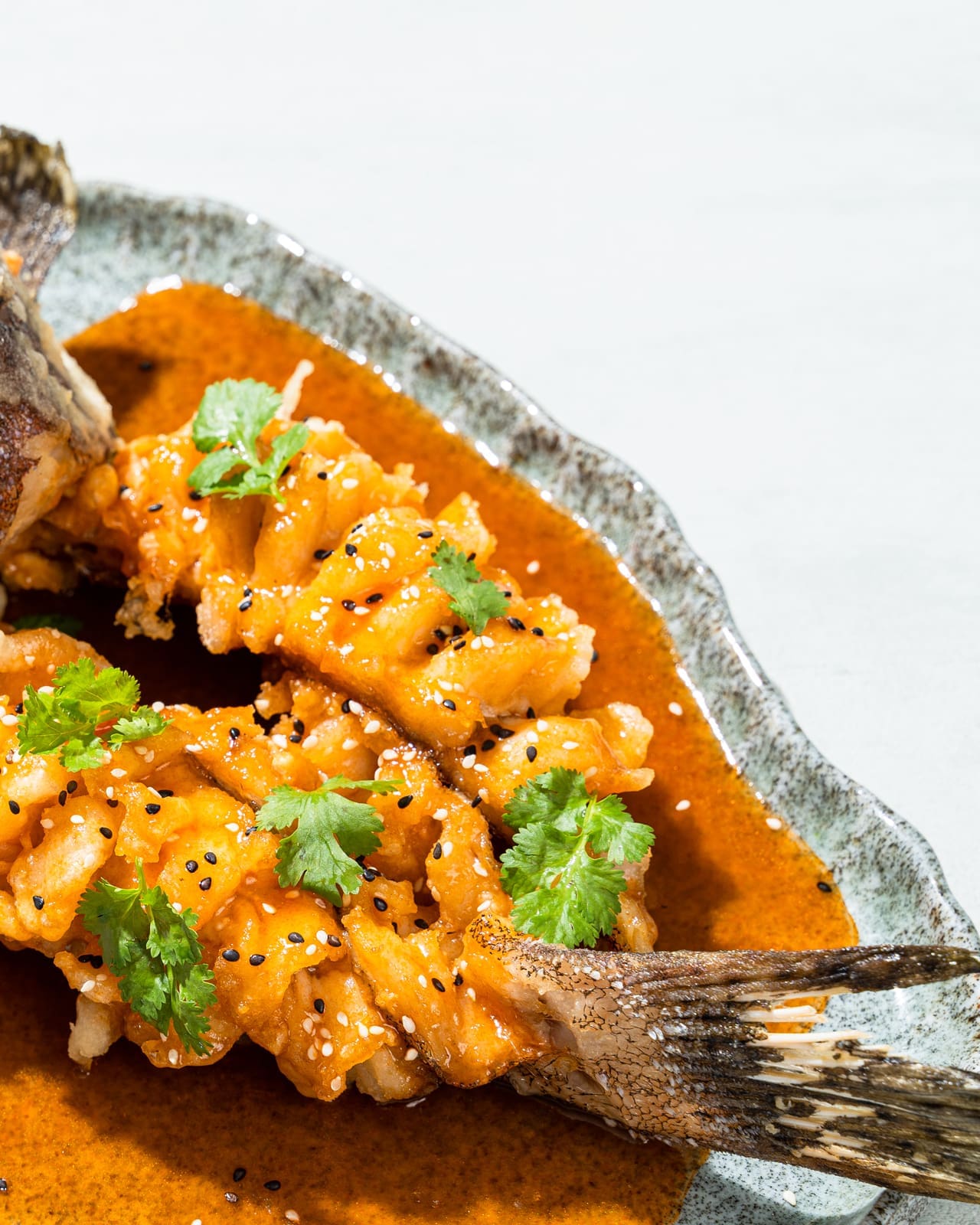

We congratulated the father-to-be Chele, whose wife Teri was due in a few weeks. “Your life is going to change,” I tell him. “But not as much as your wife’s.”
A light drizzle drove us all back indoors, where Chele began to assemble his other set of implements—his DJ equipment. In Spain, he was a DJ before he became a chef, and today he still likes to serve up some Balearic beats and deep house cuts whenever he gets the chance.
The next day our group assembled by the pool bar for an al fresco lunch, which Chele promised to keep “light.” The bar chow menu included octopus satay skewers, a squid-laden seafood pizza bianca, Aqua’s black bun take on the island classic choriburger, and surprisingly noshable tiger prawn nachos. When Chele found out my seatmate and I were actual pescatarians, he immediately whipped up a tuna choriburger for us despite our protests. It was a testament to his level of service and hospitality.
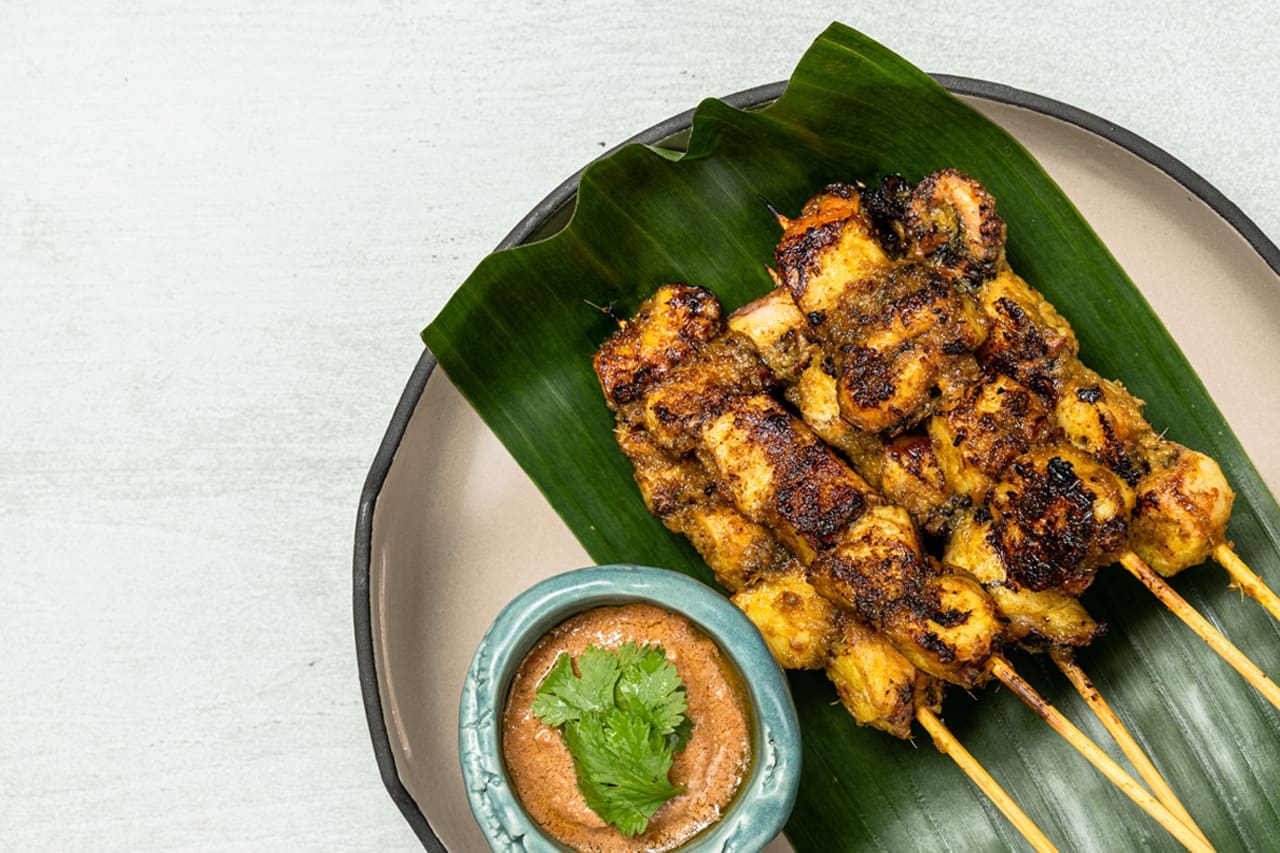
Chele also introduced his young chef de cuisine Jaime Ramos, who will be taking care of Sea.food after Chele returns to his Gallery by Chele homebase in Manila. Jaime, a fellow Spaniard, was “discovered” by Ivan Sordo, a chef partner of Chele from the Cebu restaurant Enye, while vacationing in the Philippines. Barely a year later Jaime was back in the country, joining the development team at Aqua Boracay. Because of the pandemic, however, it took a whole five years for Sea.food to finally surface.
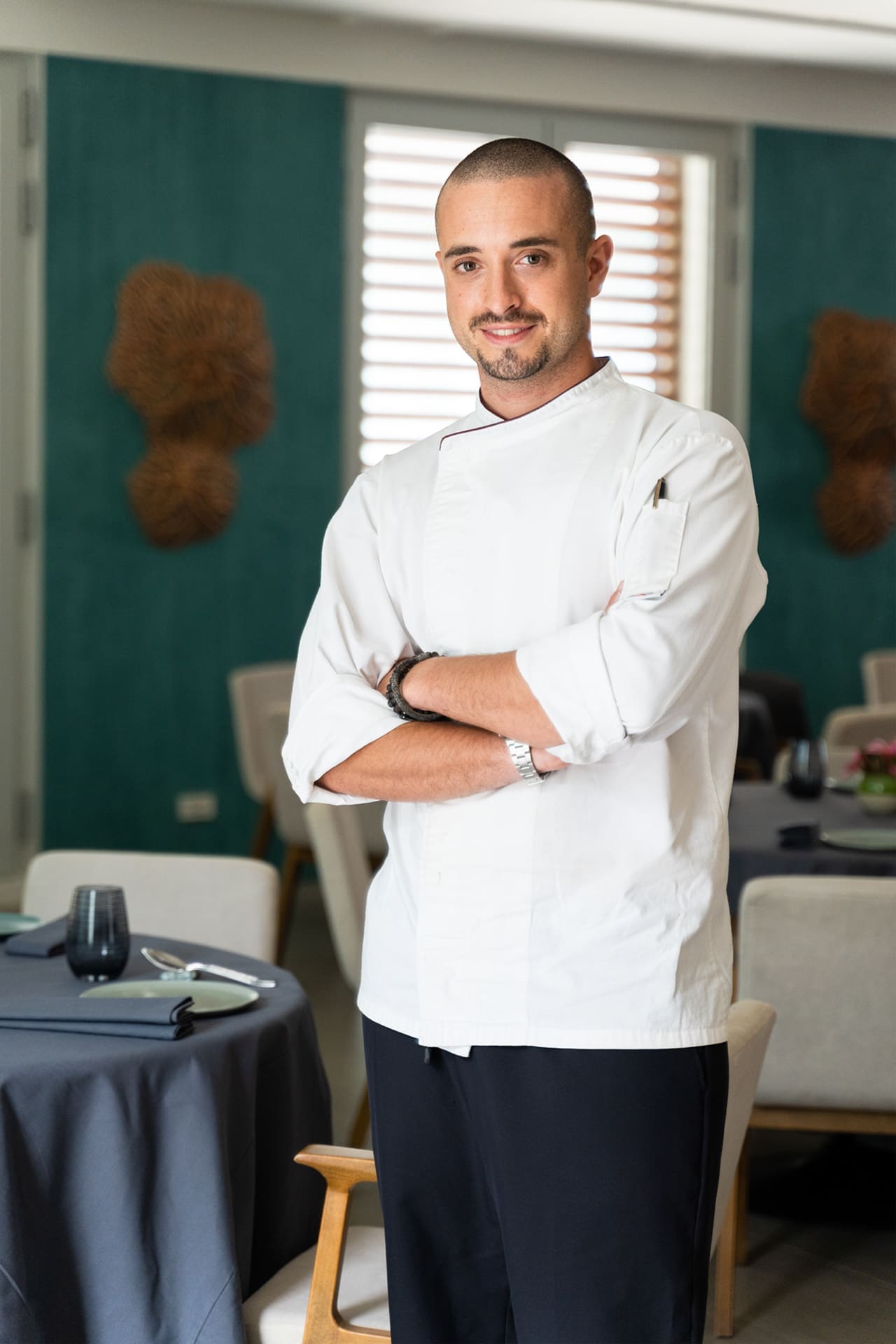
That night, I wore my most forgiving outfit, a smocked frock from Good Luck Humans that had enough room to hide a family of six. We were in for some serious seafooding and we were armed (with Gaviscon). At eight, the doors to Sea.food were opened, revealing a sophisticated space with coastal touches like fan coral wall sconces on teal colored accent walls. “It’s part city, part beach,” Chele says of the ambiance. “A destination within a destination. There’s no other place like it in Boracay.”
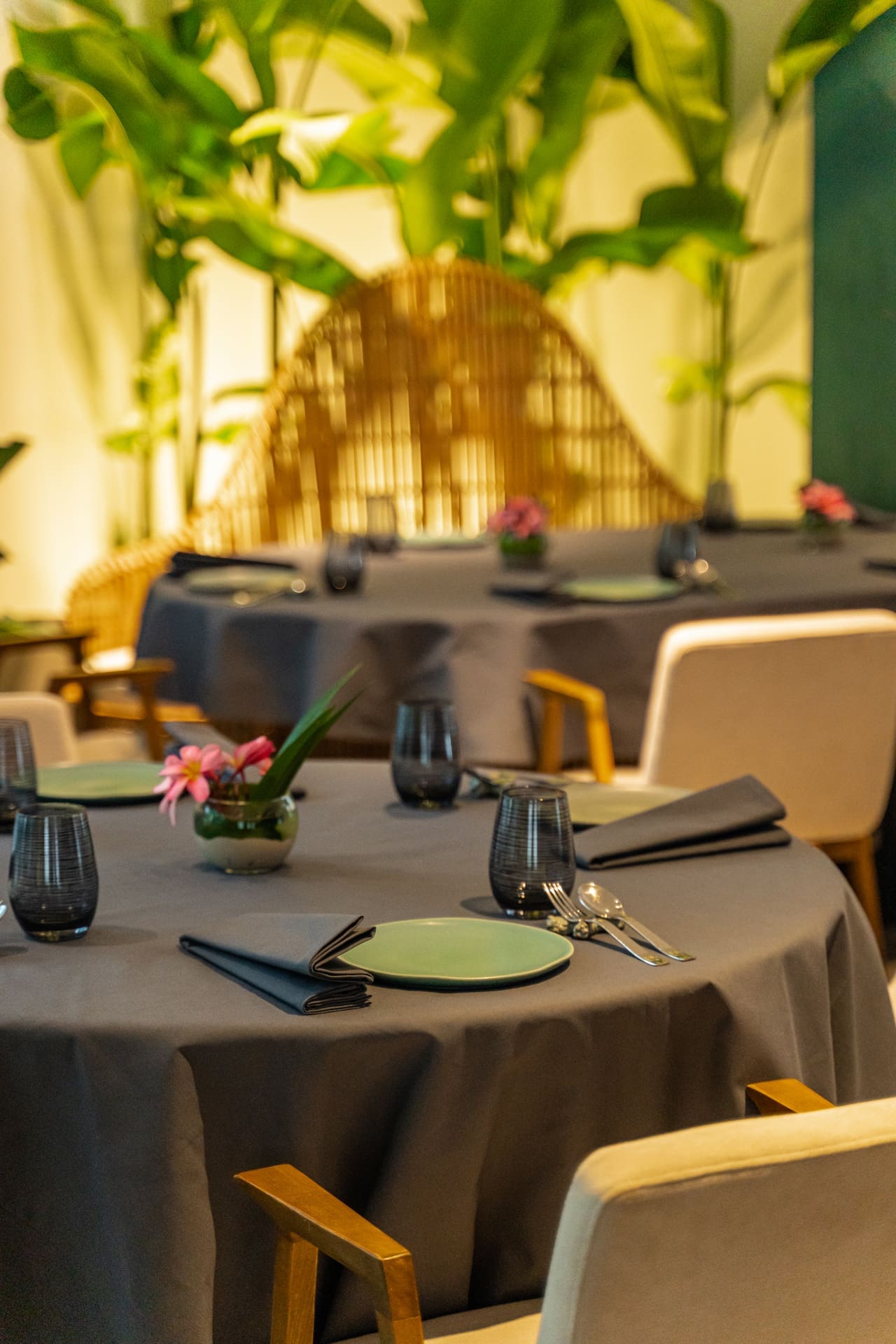
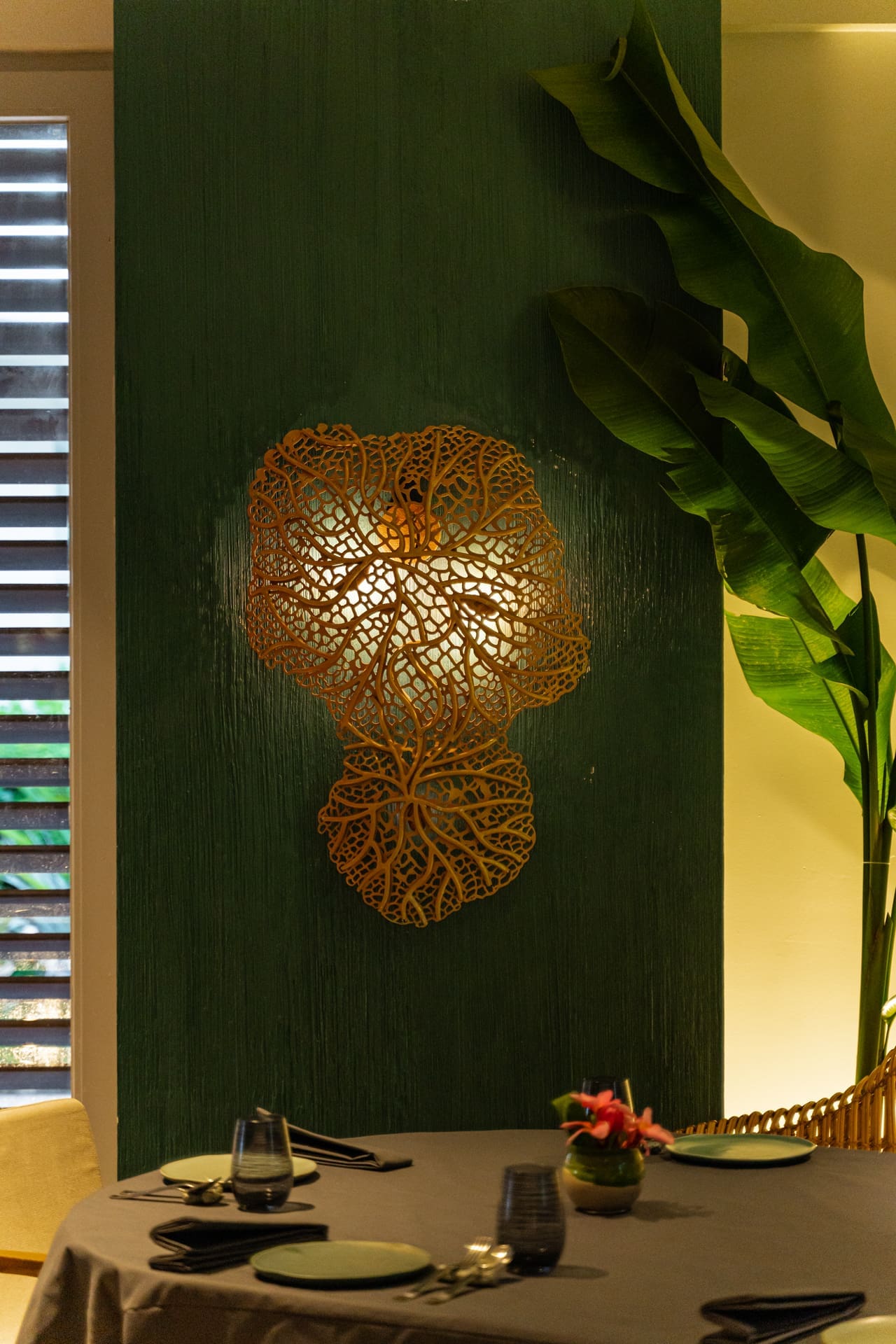
Sea.food’s menu won’t befuddle diners with inventive molecular cuisine. The premise is simple—take some of the best-loved seafood dishes from around the world and do them well, a concept he claims he thought of while on honeymoon in 2017.
We began with a flight of crudo— Peruvian ceviche, Italian octopus carpaccio, and Japanese tuna tataki. The theme is threaded throughout the entire menu, and we traveled to Singapore with a sweet chili crab salad, to Spain with a classic gambas al ajillo, and to Mexico with grilled shrimp tacos. Popping the Moet, we moved to India with a red snapper curry and Korea with a grilled squid in gochujang sauce. We crossed oceans again with a richly flavored Spanish seafood paella (where the best part is always the tutong), an American-style grilled lobster, and a whole fish roasted in the Basque tradition, simply with garlic and vinegar.

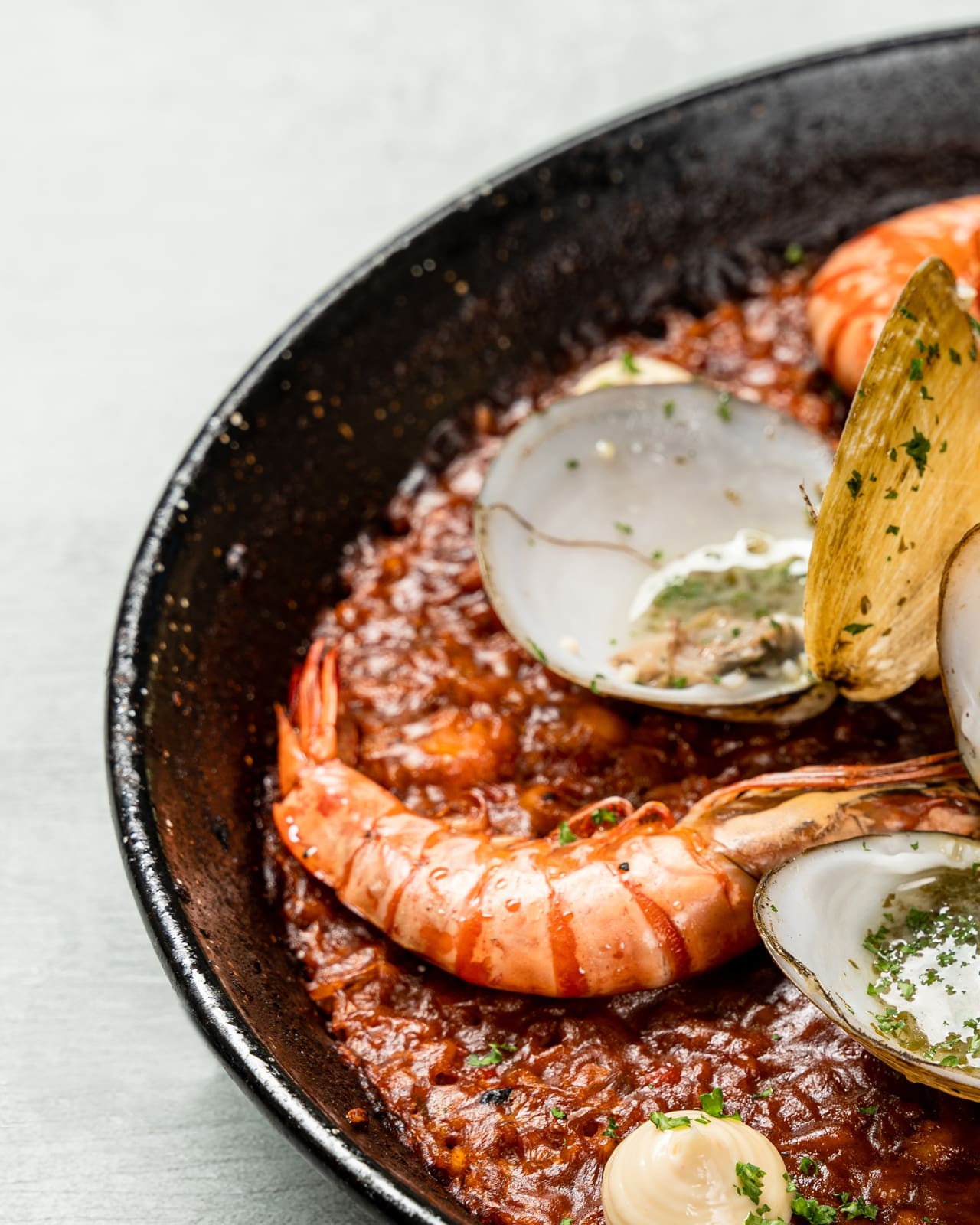
While the menu has a few concessions for carnivores, there’s nothing yet for vegetarians or veggie lovers—even the salads are heavily fish-forward and greens appear only as garnish, which could very well be a Spanish cuisine thing.
Just before sunset I had gone on an exploratory walk along the beach. There were no tourists about, making it the most tranquil I’ve ever seen Boracay. The tide was low, exposing a meadow of seagrass. Fisherfolk were bent over in the shallows, searching for catch. It was good to remember where our food comes from. It was good to bring things back to the sea.
